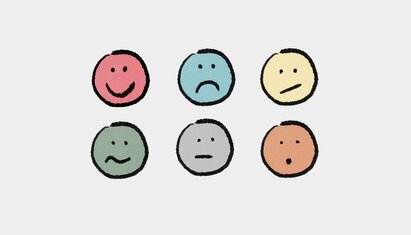Feelings wheel for adults PDF

Published October 30, 2025

Family and domestic abuse, including different forms of abuse like intimate partner violence and child abuse, is a common problem in the United States, impacting 10 million Americans annually.
This guide explains the different forms of abuse for therapists to share with clients, along with signs to look out for. We’ve also included a free downloadable types of abuse worksheet to use in your therapy practice.
There are several different forms of abuse, including:
As one of the most easy to identify signs of abuse, physical violence involves the use of physical assaults on a person, including the threat of physical violence.
Physical abuse instills a constant sense of fear and often worsens over time.
Emotional abuse includes non-physical behaviors that intimidate, control, isolate, and frighten the survivor. It can be more difficult to notice, but is just as impactful as other forms of abuse, causing significant damage to the survivor's self-esteem, autonomy, and mental health.
Sexual abuse involves the control of physical and sexual intimacy in a relationship and includes sexual coercion and reproductive coercion.
Financial abuse includes extending power and control over a person's financial resources, which may further entrap the survivor.
This involves watching, following, and harassing someone to the point that they feel unsafe and frightened.
Also a form of emotional abuse and stalking, digital abuse involves using the internet and technology to harass, bully, stalk, and intimidate.
The different forms of abuse may be subtle or overt but they are equally as impactful. Spotting the kinds of mistreatment and signs of abuse is key.
Types of physical abuse include hitting, slapping, biting, pushing, using weapons, scalding, burning, inappropriate restraint, making a person purposefully uncomfortable in their home (such as removing heating, water, and food), gaslighting, misuse of medication or forcing individuals to take substances, and involuntary isolation or confinement.
Signs may include bruises and other injuries, avoidance of physical contact, flinching, low self-esteem, self-doubt, social isolation, depression, difficulty trusting others, and increased anxiety in the presence of the perpetrator.
Types of emotional abuse behaviors include name calling, insulting, criticizing, jealousy, possessiveness, controlling what you wear and how you present yourself, monitoring your activities without consent, blaming, making accusations (such as cheating), humiliating, gaslighting (pretending not to listen, questioning reality, trivializing, and refusing to hear), threatening to harm pets and family members, stalking, and cheating on the survivor and blaming it on them.
Signs of emotional abuse include self-blame, helplessness, depression, anxiety, feeling like “you’re going crazy,” and low self-esteem.
Signs of financial abuse include controlling a person's bank accounts, not letting them have access to their own money, spending the survivor's money, getting into debt, interfering with the survivor's job, and damaging their credit.
They may also prevent the person from leaving without access to financial resources, perpetuating the cycle of control.
Signs include financial difficulty, missing possessions or assets, difficulty accessing financial resources or documents, and depending on another person to make financial decisions.
Sexually abusive behaviors include forcing a person to have sex with the perpetrator and other people, making the survivor participate in degrading sexual acts, violence during sex, and refusing to use contraception, leading the person to feel shame and humiliation as well as increasing their risk of unplanned pregnancy and sexually transmitted infections.
Signs of sexual abuse include fear of intimacy, avoiding certain people or situations, and physical injuries.
Using technology to abuse a person digitally may involve stealing their passwords, changing passwords without consent, acting as the survivor on their social media platforms or creating fake accounts in their name, reading their messages, pretending to be the survivor, and interacting with their friends and family.
Abusers may also attempt to humiliate or insult the survivor online, look through all of their private content, and use technology to track and monitor the survivor.
We’ve included this signs of abuse list in our free downloadable identifying forms of mistreatment worksheet.
Therapists can use the types of abuse worksheets with clients in several ways.
In session, support the client in visualizing and comprehending signs of abuse. You may also provide information on the cycle of abuse.
Therapists can use the different forms of abuse worksheet as an in-office handout, empowering clients to identify ways in which domestic violence might be showing up in their relationship.
The types of abuse worksheet may also be used as a psychoeducational resource about the different forms of abuse for clients and their families.
Domestic Violence Hotline. (n.d.). Forms of abuse.
Gonzalez, D., Bethencourt Mirabal, A., & McCall, J. D. (2023). Child abuse and neglect. In StatPearls. StatPearls Publishing.
Huecker MR, King KC, Jordan GA, et al. Domestic Violence. [Updated 2023 Apr 9]. In: StatPearls [Internet]. Treasure Island (FL): StatPearls Publishing; 2024 Jan-.
Social Care Institute for Excellence (2020). Types and indicators of abuse.
Washington State Department of Social and Health Services. (n.d.). Types and signs of abuse.
SimplePractice is HIPAA-compliant practice management software with everything you need to run your practice built into the platform—from booking and scheduling to insurance and client billing.
If you’ve been considering switching to an EHR system, SimplePractice empowers you to run a fully paperless practice—so you get more time for the things that matter most to you.
Try SimplePractice free for 30 days. No credit card required.
Proudly made in Santa Monica, CA © 2025 SimplePractice, LLC
Proudly made in Santa Monica, CA © 2025
SimplePractice, LLC